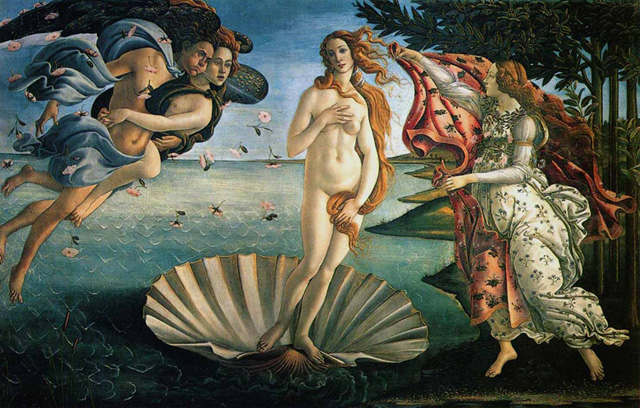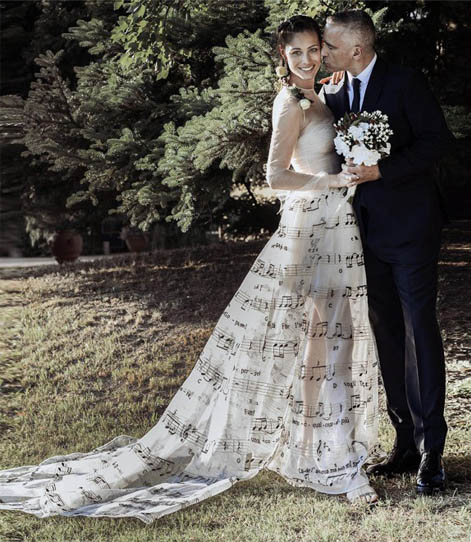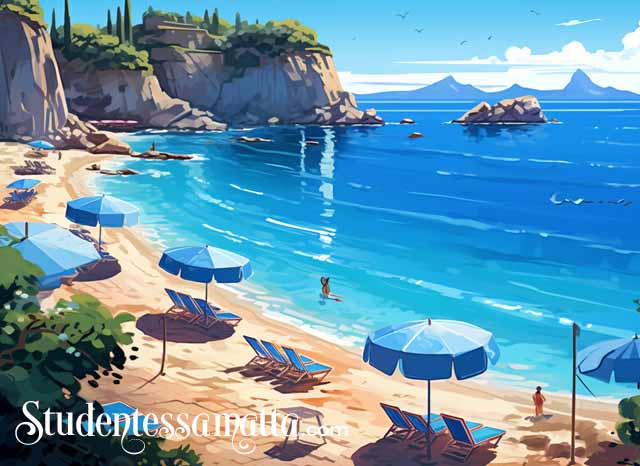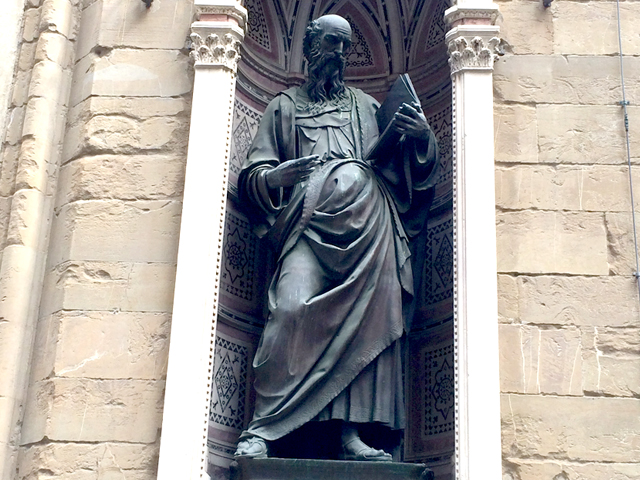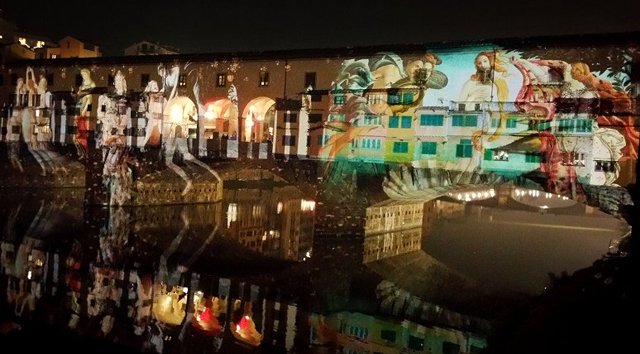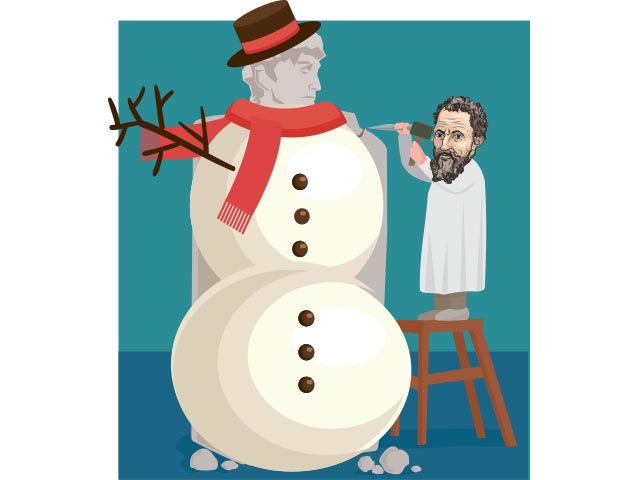
Domenica scorsa ho visitato Firenze per soli 5 euro alla ricerca di Michelangelo e delle sue sculture, anche una che si è sciolta quasi appena l’ha finita!
Last Sunday I visited Florence for only 5 Euros in search
of Michelangelo and his sculptures—even one that
melted away almost as soon as he finished it!
Cosa è più difficile da credere, che Michelangelo abbia scolpito un uomo di neve e ghiaccio, o che io abbia visitato Firenze per soli 5 euro? Ma tutto è vero! La scorsa Domenica pomeriggio ho visitato Firenze con un piccolo gruppo di viaggiatori virtuali per saperne di più sulle opere del Maestro che si possono trovare a Firenze. Il tour, sponsorizzato da PartecipArt e diretto da Francesca Bozzetto su Zoom, si intitolava: “Quando il marmo prende vita: lo scultore di Michelangelo a Firenze.”
Which is harder to believe, that Michelangelo carved a man out of snow and ice, or that I visited Florence for just 5 Euro? But both things are true! Last Sunday afternoon I visited Florence with a small group of virtual travelers to learn more about the Master’s works that can be found in Florence. The tour was sponsored by PartecipArt and led by Francesca Bozzetto on Zoom and was called “When marble comes to life: Michelangelo Florentine Sculptor.
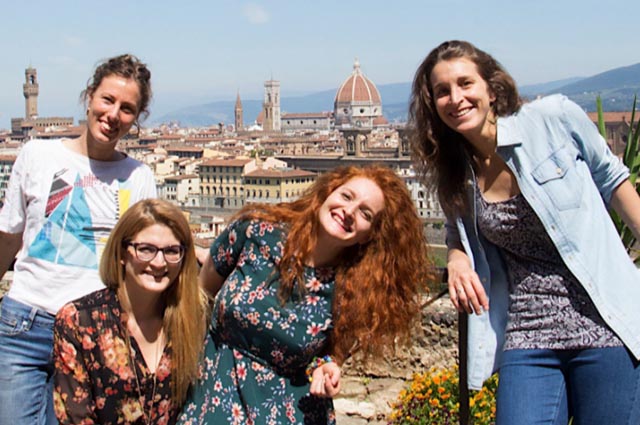
Francesca è una storica dell’arte, che insieme ad altre tre donne, danno vita all’arte nella loro città di Firenze. Eugenia, Francesca, Laura e Marta, amano l’arte, la creatività d il divertimento! Si sono conosciute a Firenze e all’università alla scuola per guide turistiche. Insieme hanno deciso di creare PartecipArt.
Francesca is an art historian, who along with three other women, bring art to life in their city of Florence. Eugenia, Francesca, Laura and Marta, love art, creativity, and fun! They first became acquainted in Florence at university and the school for Tourist guides. Together they decided to create PartecipArt.

Le storiche d’arte descrivono PartecipArt come:
The art historians describe PartecipArt as:
Un modo dinamico, divertente e interattivo per entrare in contatto con l’arte di Firenze.
A dynamic, entertaining, and interactive way to
experience the art of Florence.
Trovo molto interessante l’idea alla base di PartecipArt, poiché, come loro, credo che l’arte e la storia dell’arte non siano solo un argomento arido e noioso. Invece, il mondo dell’arte è pieno di artisti affascinanti, passione, storie intriganti e persino drammi! Ecco perché scrivo I miei libri ambientati in Italia. Questo è il motivo per cui queste donne condividono la loro passione con il mondo in persona e on-line.
I find the idea behind PartcipArt to be very interesting, as, like them, I believe art and art history aren’t just a dry, dusty subject. Instead, the world of art is full of fascinating artists, passion, intriguing stories, and even drama! That is why I write my books set in Italy. That is why they share their passion with the world in person and online.
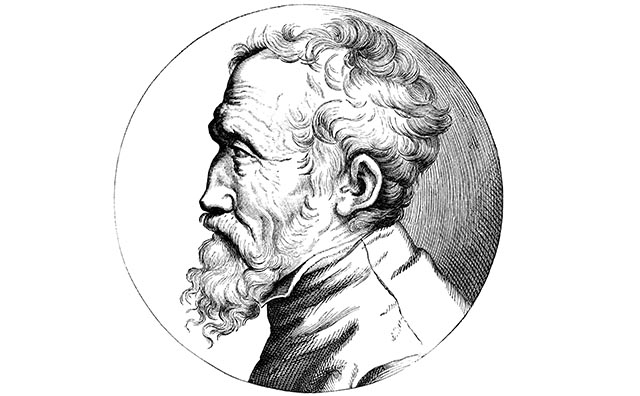
Quindi, cosa c’entra Michelangelo con la costruzione di un pupazzo di neve??
So, what did Michelangelo have to do
with the building of a snowman??
È curioso, no? Ma, durante il mio viaggio a Firenze domenica scorsa, ho imparato alcune cose sorprendenti su Michelangelo che non sapevo prima. Ad esempio, oltre a scolpire sculture miracolose nel marmo che hanno deliziato i Medici, Michelangelo ha anche creato una pupazzo di neve per Pietro Medici quando era solo un adolescente di 19 anni!
It’s very curious, isn’t it? But, during my trip to Florence last Sunday, I learned a few surprising things about Michelangelo that I didn’t know before. For instance, in addition to carving miraculous sculptures in marble that delighted the Medici Michelangelo also created a statue of snow for Pietro Medici when he was just a teenager of 19!
Michelangelo ha creato opere d’arte non
solo in marmo… ma anche di neve!
Michelangelo created works of art not
only in marble… but also in snow!
Alla morte del Magnifico, il governo dei Medici passò al figlio – Piero detto “Piero il Fatuo” (Piero il Disgraziato). Senza il suo committenti Lorenzo o un posto alla corte dei Medici, il giovane Michelangelo tornì a casa del padre Lodovico, che a malincuore lo accolse lamentandosi del fallimento del figlio. Michelangelo si sentì umiliato. Era troppo “vecchio per tornare dal suo maestro, Ghirlandaio, e troppo giovane per avviare una sua attività.
After Lorenzo il Magnifico died, Medici rule was transferred to his son — Piero— who was dubbed “Piero il Fatuo” (Piero the Unfortunate). Without his patron Lorenzo, or a home at the Medici Court, the young Michelangelo had to return to the house of his father Lodovico, who reluctantly welcomed him, complaining of his son’s failure. Michelangelo felt humiliated. He was too old to return to his old master—Ghirlandaio—and too young to start his career on his own.
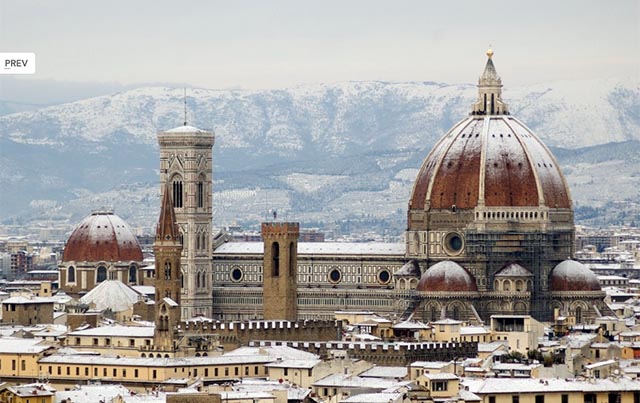
Ma poi, per il destino, il 20 gennaio 1494, c’è stata una grande tempesta di neve a Firenze.
But then, as fate would have it, on January 20,
in 1494, there was a huge snowstorm in Florence.
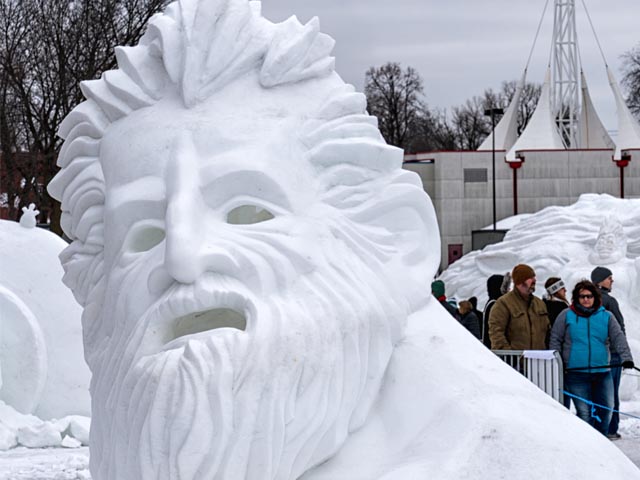
(Photo Credit: Minnesota Monthly Magazine)
Per celebrare la manifestazione, Piero il Fatuo ha commissionato a Michelangelo la creazione del più bel pupazzo di neve di tutti i tempi! All’inizio, Michelangelo non fu molto entusiasta del lavoro. Ma, ben presto, colse l’occasione, rendendosi conto che questa commissione poteva essere il suo “biglietto” per la corte medicea. Così accettò la sfida e creò una statua di Ercole alta quasi 2 metri che riuscì a far colpo sul popolo fiorentino.
To celebrate the event, Piero il Fatuo commissioned Michelangelo to create a snowman. But not just any snowman. It was to be the grandest snowman of all time! At first, Michelangelo was not very thrilled with the assignment. But, quickly, he rose to the occasion, realizing this commission might be his ticket back into the Medicea court. So, he accepted the challenge and created a statue of Hercules almost 2 meters tall that succeeded in amazing the Florentine people.
L’uomo delle nevi durò otto giorni nel Giardino Mediceo di Via Larga finché non si sciolse in una pozzanghera. Ma la sensazione creata dalla statua affascinò Piero. Di conseguenza, Michelangelo ricevette l’invito a ritornare a Palazzo Medici e nella sala in cui aveva vissuto al tempo del Magnifico.
The Snowman lasted for eight days in the Medici Garden in Via Larga until it melted into a puddle. But the sensation the statue created did indeed captivate Piero. As a result, Michelangelo received an invitation to return to the Medici palace and the room he had lived in during the time of il Magnifico.
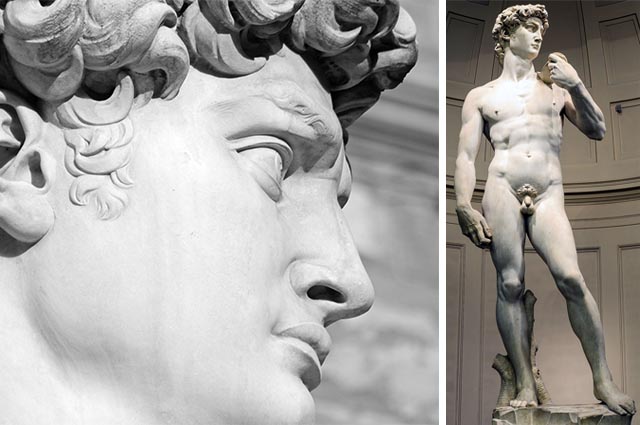
Grazie al colossale pupazzo di neve, Michelangelo ebbe ancora benefattori e continuò a lavorare per i Medici. E come tutti già sappiamo, ha continuato a scolpire statue che erano più eternal, come la statua del David nella Accademia di Firenze (una copia che anche si può trovare fuori da Palazzo Vecchio.)
Due to the colossal snowman, Michelangelo had benefactors once again and continued working for the Medici. And as we all know already, he went on to carve statues that were more enduring—like Florence’s statue of David in the Academia (a copy of which also stands outside the Palazzo Vecchio.)
Bella storiella, vero?
Ecco un’altra cosa interessante.
Great anecdote, right? Here’s another interesting insight.
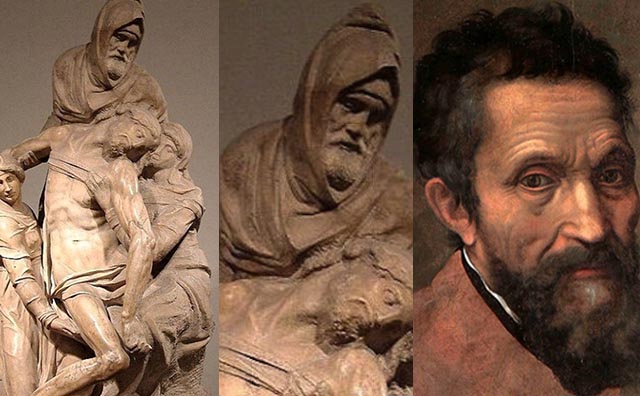
Una delle ultime sculture monumentali di Michelangelo realizzate quando aveva ben oltre i 70 anni fu La Deposizione (una scena che raffigura un momento tenero dopo la rimozione di Cristo dalla croce.) L’opera è ora al Museo dell’Opera del Duomo di Firenze. Nicodemo, l’uomo dietro Maria, che reggeva l’inerte corpo di Cristo, ero uno scultore che scolpiva le visioni che Dio gli aveva mandato.
One of Michelangelo’s last monumental sculptures made when he was well into his 70s was The Deposition (a scene depicting a tender moment after Christ’s removal from the cross). The piece is now in the Museo dell’Opera del Duomo in Florence. Nicodemos, the man who stands behind Mary, supporting the limp body of Christ, was a sculptor who carved the visions God sent him.
È interessante sapere che Michelangelo diede a Nicodemo il suo viso, così in effetti è l’ultimo autoritratto di Michelangelo. Ma ancora, è un tribute straziante, poiché Vasari, amico di Michelangelo, ha scritto che l’artista era profondamente scoraggiato dalle sue capacità fallimentari, dall’estrema durezza del marmo e dalla malinconia della vecchiaia, che ha attaccato il statua in un impeto di frustrazione, rompendo così il braccio sinistro di Cristo in due punti.
It is interesting to learn that the sculptor gave Nicodemus his features, so in effect, it is Michelangelo’s last self-portrait. But still, it is a heartbreaking tribute, as Vasari, Michelangelo’s friend, has written that the artist was deeply discouraged by his failing abilities, the extreme hardness of the marble, and by old age melancholy, that he attacked the statue in a fit of frustration, thus break the left arm of Christ in two places.
If you want to deepen your knowledge of art and Florence, you can participate in the next Virtual Art Tours guided by the women of PartecipArt. Follow the link below to sign up for an event through Eventbrite where you can purchase a PartecipArt tour for just E5.
